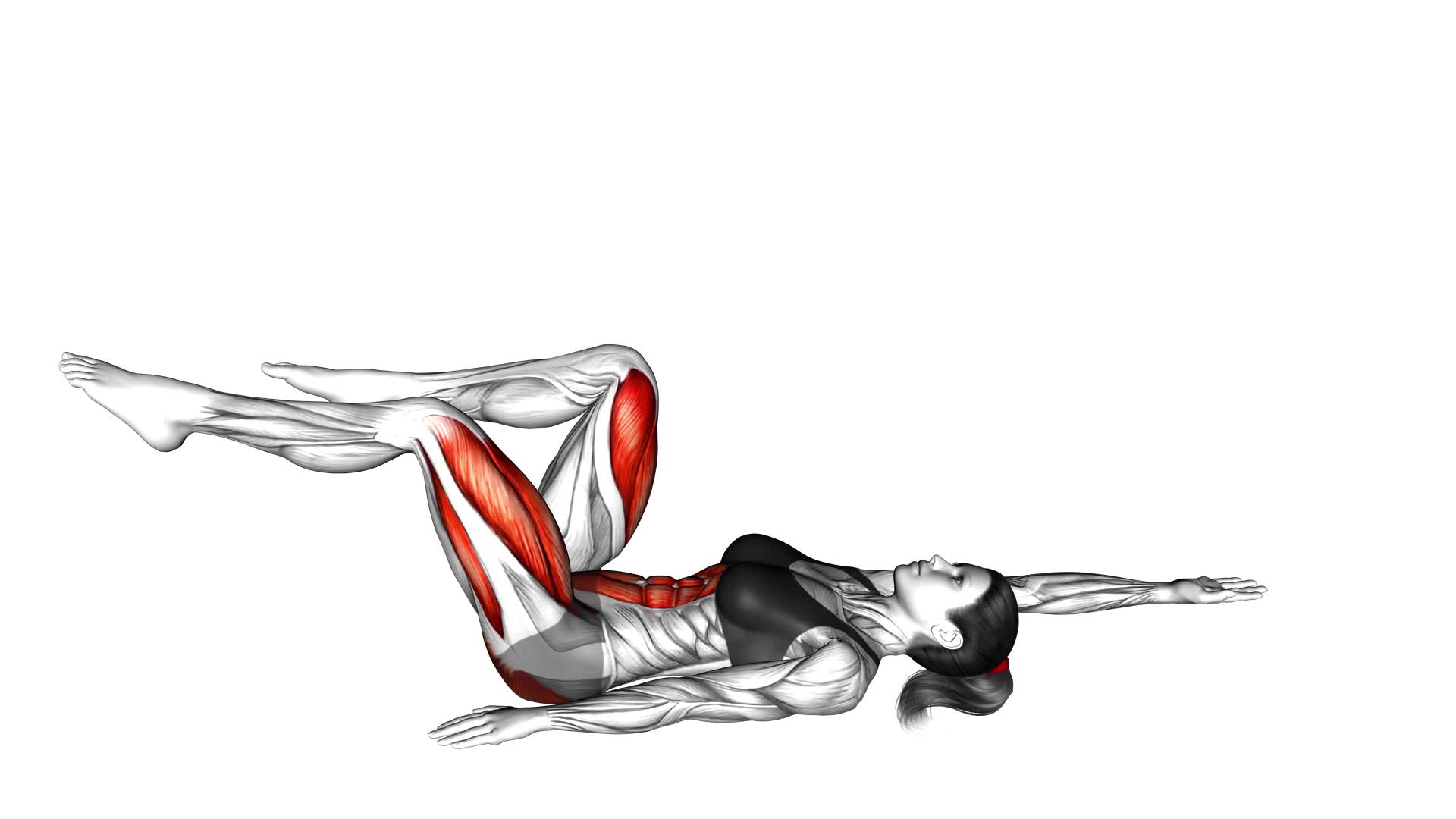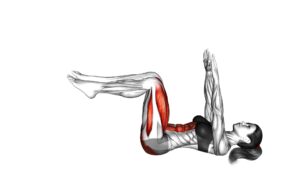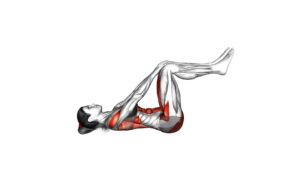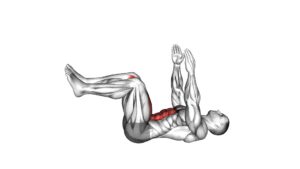Dead Bug (version 2) (female) – Video Exercise Guide & Tips

Are you looking for an effective exercise to strengthen your core and improve stability? Look no further than the Dead Bug (version 2) exercise!
Watch This Exercise Video
In this video exercise guide, you'll discover the benefits of this exercise, learn the proper form and technique, and find variations to challenge yourself.
Plus, we'll share common mistakes to avoid and tips for getting the most out of this workout.
Get ready to engage your abs and achieve a stronger, more stable core!
Key Takeaways
- Dead Bug exercise targets core muscles including abdominals, obliques, and lower back.
- Proper form and technique involve lying flat on your back with arms extended towards the ceiling and alternating the extension of legs and arms.
- Variations and modifications such as advanced modifications, equipment variations, cross body dead bug, and weighted dead bug can add challenge and engagement to the exercise.
- Common mistakes to avoid include lifting the lower back off the ground, lifting the head and neck off the ground, not breathing deeply, and not considering modifications or progressions.
Benefits of Dead Bug Exercise
Improve your core strength and stability with the Dead Bug exercise's benefits.
The Dead Bug exercise is a versatile and effective exercise that targets your core muscles, including your abdominals, obliques, and lower back. By engaging these muscles, you can improve your overall core strength and stability.
Core strengthening is crucial for maintaining proper posture, preventing injuries, and supporting your spine. The Dead Bug exercise specifically targets your deep core muscles, which play a vital role in stabilizing your spine and pelvis during movement.
Stability training is another key benefit of the Dead Bug exercise. As you perform the exercise, you're required to maintain a stable and neutral spine position while moving your limbs. This challenges your core muscles to work together to stabilize your body, improving your overall balance and coordination.
Incorporating the Dead Bug exercise into your fitness routine can have numerous benefits. Not only does it strengthen your core muscles and improve stability, but it also enhances your athletic performance in other activities such as running, weightlifting, and sports.
Proper Form and Technique
Use these five steps to ensure proper form and technique for the Dead Bug exercise. This exercise is great for improving core strength and stability.
Step 1: Begin by lying flat on your back with your arms extended straight up towards the ceiling. Bend your knees and lift your feet off the ground, so that your knees are directly above your hips. This is your starting position. Exhale and slowly extend your right leg straight out, while simultaneously lowering your left arm overhead. Keep your lower back pressed into the ground and your core engaged.
Step 2: Inhale as you return your right leg and left arm back to the starting position.
Step 3: Repeat the movement on the other side, extending your left leg and lowering your right arm.
Step 4: Continue alternating sides for the desired number of repetitions.
Step 5: To increase the challenge and progress the exercise, you can add resistance by using a resistance band or holding a light dumbbell in your hands.
Remember to maintain proper form throughout the exercise and avoid arching your back or letting your lower back lift off the ground. By following these steps, you can ensure proper form and maximize the benefits of the Dead Bug exercise.
Variations to Challenge Yourself
To challenge yourself during the Dead Bug exercise, try incorporating these variations:
- Advanced Modifications: Increase the difficulty of the exercise by extending your legs lower to the ground or by adding resistance bands around your ankles.
- Equipment Variations: Incorporate equipment such as an exercise ball or a Bosu ball to challenge your stability and core strength. Place the ball between your knees or feet while performing the exercise to engage different muscle groups.
- Cross Body Dead Bug: Instead of extending opposite arm and leg, try crossing your arm and leg over your body. This variation adds a rotational element, engaging your obliques and challenging your balance.
- Weighted Dead Bug: Hold a dumbbell or kettlebell in your hands while performing the exercise. The added weight will intensify the core engagement and increase the challenge for your muscles.
- Single Leg Dead Bug: Lift one leg off the ground and perform the exercise with only one leg extended at a time. This variation increases the demand on your core stability and strengthens your hip flexors.
Incorporating these variations won't only challenge your core muscles but also help you progress and continue to improve your strength and stability. Remember to always maintain proper form and technique to avoid injury.
Common Mistakes to Avoid
When performing the Dead Bug exercise, it's important to be aware of common mistakes to avoid in order to maximize the effectiveness of the workout.
One common mistake is allowing your lower back to lift off the ground. To prevent this, engage your core muscles and press your lower back into the floor throughout the exercise.
Another mistake is lifting your head and neck off the ground, which can strain your neck muscles. Instead, keep your head and neck relaxed and in a neutral position.
It's also important to avoid holding your breath during the exercise. Remember to breathe deeply and exhale as you extend your arms and legs.
Modifications and progressions are also important to consider when performing the Dead Bug exercise.
If you find the exercise too challenging, you can start by bending your knees and keeping your feet on the ground. This will provide more stability and support.
As you become more comfortable, you can gradually straighten your legs and lower them closer to the ground.
To increase the difficulty, you can add resistance by holding a light dumbbell or a stability ball between your hands and knees. This will engage your muscles more and enhance the effectiveness of the exercise.
Tips for Getting the Most Out of the Exercise
Maximize your results by engaging your core muscles and maintaining proper form throughout the Dead Bug exercise. To get the most out of this exercise, here are some tips to keep in mind:
- Start with modifications: If you're a beginner or new to the Dead Bug exercise, it's important to start with modifications. Instead of extending your arms and legs fully, keep them bent at a 90-degree angle. This will help you maintain stability and prevent strain.
- Focus on your breathing: Remember to breathe throughout the exercise. Inhale deeply as you lower your arm and opposite leg, and exhale as you return to the starting position. This will help you engage your core muscles and maintain control.
- Maintain proper form: Keep your lower back pressed into the ground throughout the exercise. Avoid arching or rounding your back, as this can put strain on your spine. Engage your core muscles to stabilize your body and maintain proper alignment.
- Incorporate the Dead Bug into a full body workout routine: The Dead Bug exercise is a great addition to a full body workout routine. Pair it with exercises like planks, squats, and lunges to target different muscle groups and enhance overall strength and stability.
- Progress gradually: As you become more comfortable with the exercise, gradually increase the difficulty by straightening your arms and legs fully. This will challenge your core muscles even more and allow for further progression.
Frequently Asked Questions
How Many Calories Can You Burn by Doing the Dead Bug Exercise?
You can burn calories by doing the dead bug exercise.
It's an effective exercise for weight loss.
The dead bug exercise targets your core muscles and can help strengthen and tone them.
By engaging multiple muscle groups, it helps to increase your heart rate and burn calories.
Incorporating the dead bug exercise into your fitness routine can contribute to your overall calorie burn and aid in your weight loss goals.
Will the Dead Bug Exercise Help Me Lose Belly Fat?
The dead bug exercise is effective for overall core strength and can contribute to losing belly fat. It targets the abdominal muscles and engages the entire core, helping to tone and strengthen the midsection.
While there are other ab exercises that also aid in belly fat reduction, the dead bug exercise offers a unique challenge by requiring stability and coordination.
Incorporating it into your fitness routine can be beneficial for achieving your goal of losing belly fat.
Can the Dead Bug Exercise Help Improve My Posture?
Improving your posture is important for overall health and well-being. The dead bug exercise can be a helpful tool in achieving better posture.
To get the most out of this exercise, focus on proper form and technique. As for how long you should hold each position, aim for around 10-20 seconds per repetition.
If you're a beginner, don't worry! The dead bug exercise can be modified to suit your fitness level.
Is the Dead Bug Exercise Suitable for People With Lower Back Pain?
If you have lower back pain, you may be wondering if the dead bug exercise is suitable for you. It's important to note that modifications can be made to the exercise to accommodate those with lower back pain. These modifications can help reduce strain on the lower back while still targeting the core muscles.
However, if you find that the dead bug exercise exacerbates your lower back pain, there are alternative exercises that can be done to strengthen your core without putting unnecessary stress on your back.
How Often Should I Do the Dead Bug Exercise to See Results?
To see results from the dead bug exercise, you should do it regularly. Consistency is key! Aim to incorporate the dead bug exercise into your workout routine at least three times a week. By doing so, you'll give your core muscles ample opportunity to strengthen and improve.
Keep in mind that if you have lower back pain, it's important to modify the exercise to ensure proper form and avoid exacerbating any discomfort. But overall, the dead bug exercise can provide great benefits for core strength.
Conclusion
In conclusion, the dead bug exercise is a beneficial and effective workout for strengthening the core muscles. By maintaining proper form and technique, you can maximize the benefits and avoid common mistakes.
Additionally, challenging yourself with variations can further enhance your progress. Remember to listen to your body and take it slow if you're a beginner.
With consistency and dedication, you can achieve great results with the dead bug exercise.

Author
Years ago, the spark of my life’s passion ignited in my mind the moment I stepped into the local gym for the first time. The inaugural bead of perspiration, the initial endeavor, the very first surge of endorphins, and a sense of pride that washed over me post-workout marked the beginning of my deep-seated interest in strength sports, fitness, and sports nutrition. This very curiosity blossomed rapidly into a profound fascination, propelling me to earn a Master’s degree in Physical Education from the Academy of Physical Education in Krakow, followed by a Sports Manager diploma from the Jagiellonian University. My journey of growth led me to gain more specialized qualifications, such as being a certified personal trainer with a focus on sports dietetics, a lifeguard, and an instructor for wellness and corrective gymnastics. Theoretical knowledge paired seamlessly with practical experience, reinforcing my belief that the transformation of individuals under my guidance was also a reflection of my personal growth. This belief holds true even today. Each day, I strive to push the boundaries and explore new realms. These realms gently elevate me to greater heights. The unique combination of passion for my field and the continuous quest for growth fuels my drive to break new ground.







